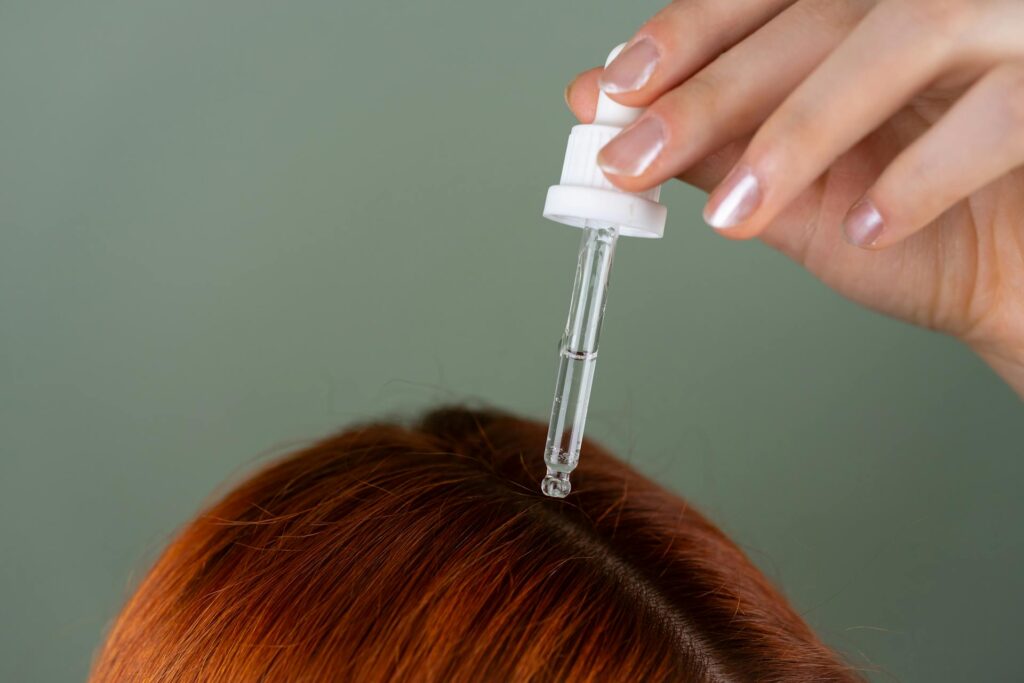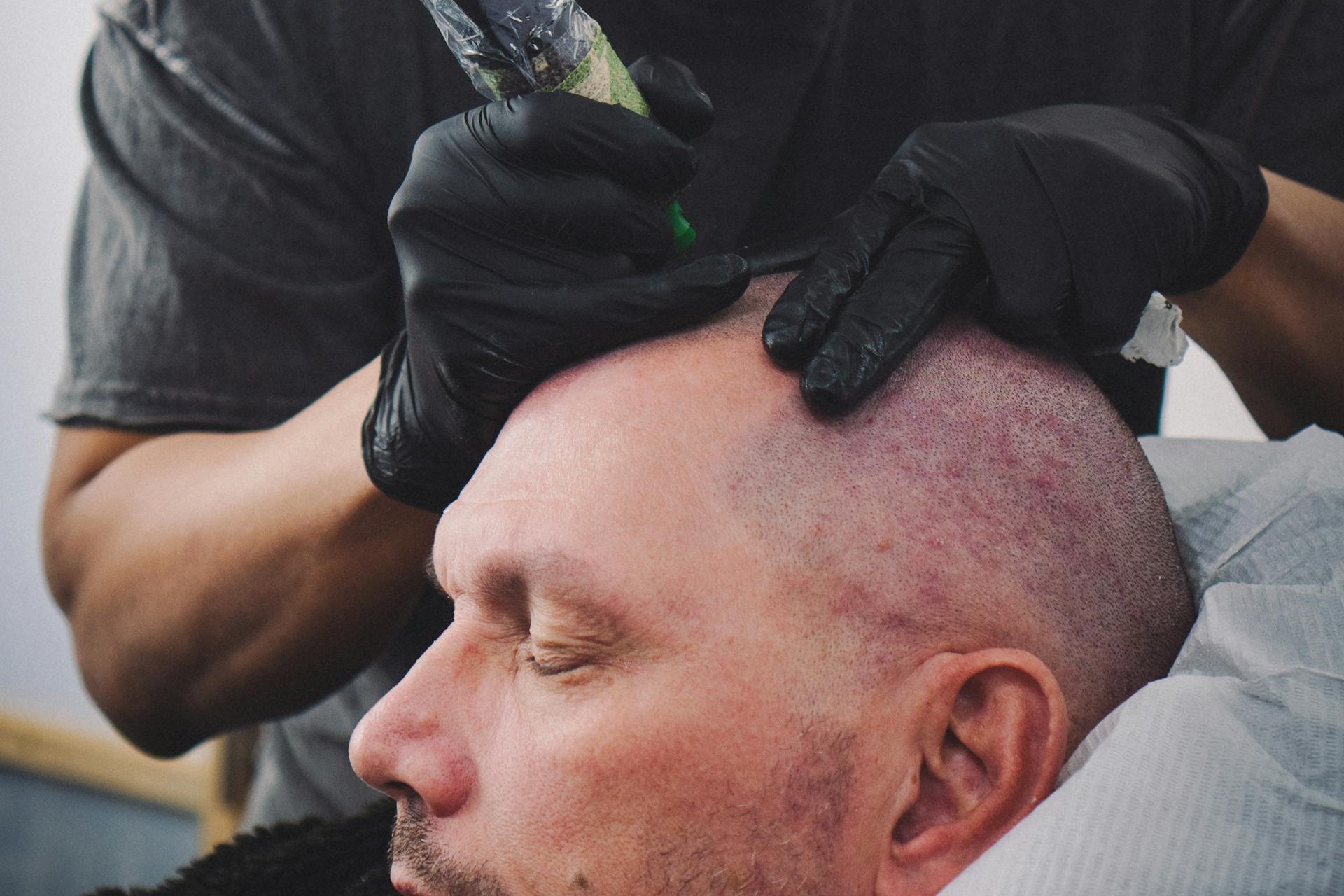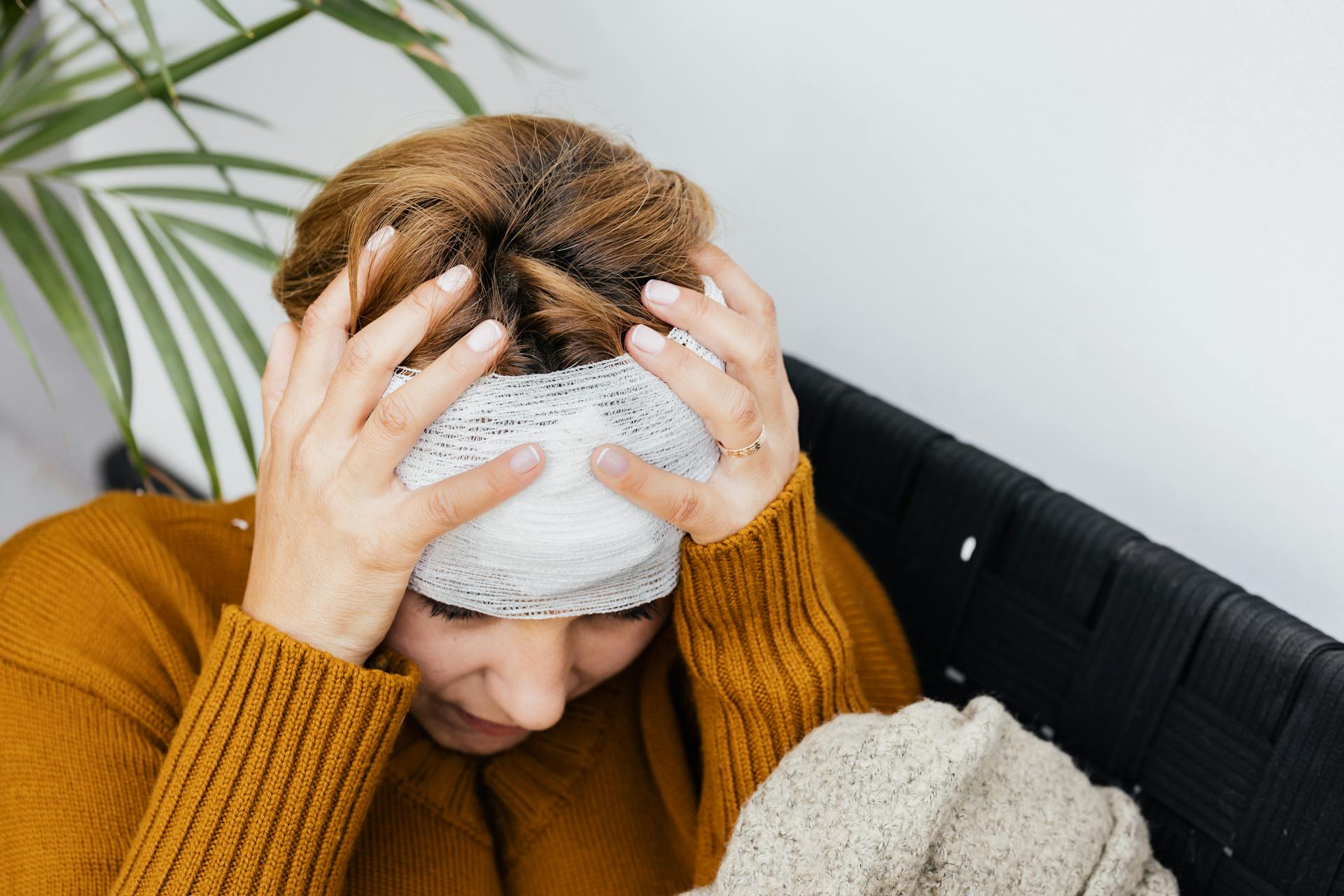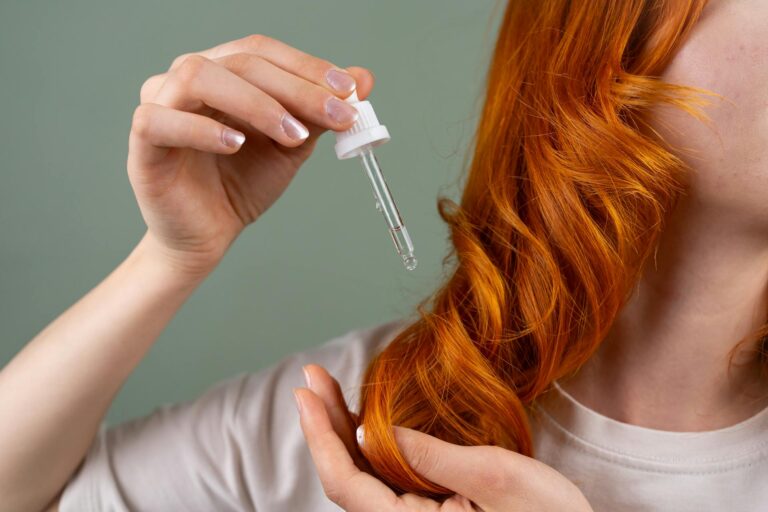
Are you experiencing hair loss and seeking effective solutions? Hair restoration therapy presents a variety of treatments aimed at revitalising your hair and enhancing your confidence.
From medications and laser therapy to advanced options such as Platelet-Rich Plasma (PRP) therapy and hair transplant surgery, there are numerous possibilities available. This guide will take you through each type of therapy, explain who qualifies, and weigh the benefits against potential risks. It will also provide valuable insights on preparation, recovery, and ongoing maintenance.
Additionally, you will find information on the cost of hair restoration in the UK involved and alternative treatments that may better match your needs. Your journey to fuller hair begins here.
What is Hair Restoration Therapy?

Hair restoration therapy is a comprehensive approach aimed at addressing hair loss issues, offering individuals a range of effective treatment options to help restore both their confidence and hair density.
This guide provides insight into various hair restoration techniques, from medications to surgical procedures, to assist those dealing with conditions such as alopecia, hair thinning, and stress-related hair loss.
It is essential to understand the underlying causes of hair loss in order to select the most appropriate therapy, which often involves consulting with a dermatologist to evaluate personal needs and objectives.
What are the Different Types of Hair Restoration Therapy?
When discussing hair restoration therapy, it is important to recognise the variety of treatment options available, each designed to accommodate individual needs and preferences.
These techniques can include medications such as minoxidil and finasteride, as well as more advanced procedures like laser therapy or hair transplant surgery.
Additionally, non-surgical options, such as PRP therapy and microneedling, have become increasingly popular due to their effectiveness in stimulating hair follicles and promoting overall scalp health.
1. Medications
Medications play a significant role in the realm of hair restoration therapy, with options such as minoxidil and finasteride being widely acknowledged for their effectiveness in promoting hair regrowth. Minoxidil functions by enhancing blood flow to the hair follicles, while finasteride serves as a DHT blocker, thereby reducing the hormonal influences that contribute to hair loss. Often, these hair regrowth products are recommended as part of a comprehensive hair care regimen aimed at improving scalp health and hair density.
For individuals considering these treatments, it is crucial to seek guidance from healthcare providers. Gaining an understanding of the specific mechanisms behind these medications can enable patients on their hair restoration journey.
While minoxidil can be obtained over the counter, finasteride necessitates a prescription, highlighting the importance of professional evaluation. It is also essential to discuss potential side effects, such as scalp irritation or sexual dysfunction, in depth.
By educating themselves about these options and engaging in proper consultations, individuals can ensure a personalised approach, which ultimately fosters greater confidence and effectiveness in restoring their hair.
2. Laser Therapy
Laser therapy, particularly low-level laser therapy (LLLT), is an advanced hair restoration treatment that uses light energy to stimulate hair follicles, thereby promoting increased hair growth and density. This non-invasive technique has gained recognition for its effectiveness in enhancing scalp health and addressing various types of hair loss, including androgenetic alopecia and stress-related hair loss. Many patients have reported positive outcomes when they incorporate laser therapy into their overall hair restoration plan.
The principles of LLLT involve the interaction of specific wavelengths of light with cellular components, which enhances cellular metabolism and encourages tissue repair. In terms of hair restoration, this therapeutic approach not only rejuvenates existing hair follicles but also creates an optimal environment for new hair growth.
As part of a comprehensive hair restoration strategy, LLLT pairs well with other treatments, such as topical minoxidil or finasteride, ensuring a well-rounded approach to improving hair density and strength. Patients can anticipate varying results, often noticing visible improvements within a few months, making it an attractive option for those seeking effective, scientifically supported solutions.
3. Platelet-Rich Plasma (PRP) Therapy
Platelet-Rich Plasma (PRP) therapy represents an innovative approach to hair restoration, utilising the body’s own platelets to stimulate hair growth and enhance scalp health. By injecting concentrated platelets directly into the scalp, this therapy encourages the healing and regeneration of hair follicles, making it a viable option for individuals experiencing hair thinning or alopecia. Many patients have reported noticeable improvements in hair density and overall appearance following PRP therapy.
The process of PRP therapy begins with a straightforward blood draw from the patient. This blood is then processed using a centrifuge to isolate the platelet-rich plasma. This concentrated solution is carefully injected into targeted areas of the scalp to optimise its effectiveness.
Depending on individual circumstances, multiple sessions may be required to achieve the best results. This treatment is often complemented by post-procedure care, which includes avoiding harsh chemicals and prolonged sun exposure.
Furthermore, PRP therapy can be effectively combined with other hair restoration products and techniques, such as minoxidil and hair transplantation, to enhance overall outcomes and provide a more comprehensive strategy for addressing hair loss.
4. Hair Transplant Surgery
Hair transplant surgery has become a popular and highly effective solution for individuals experiencing significant hair loss or thinning. The procedure involves relocating hair follicles from a donor area to a recipient area on the scalp. It employs advanced techniques such as Follicular Unit Extraction (FUE) and Follicular Unit Transplantation (FUT), both of which can yield natural-looking results and restore hair density.
To ensure optimal outcomes, the hair transplantation process is carefully planned and typically begins with a consultation with a skilled dermatologist.
During the initial consultation, the patient’s overall health, hair loss pattern, and expectations are thoroughly discussed to develop a tailored treatment plan. Preoperative assessments may also be conducted, which can include blood tests and a review of the patient’s medical history to ensure they are well-prepared for surgery.
Different techniques are available to accommodate individual needs, with FUE being the less invasive option and FUT often providing a more substantial yield of follicles. After the surgery, recovery times can vary; while many patients may experience mild discomfort and swelling, they are usually able to resume their daily activities within a few days.
Real patient testimonials frequently underscore the transformative impact of the surgery, highlighting the increased confidence and enhanced self-image that often follow a successful hair transplant.
Who is a Good Candidate for Hair Restoration Therapy?

Determining whether someone is a good candidate for hair restoration therapy requires a careful assessment of several factors. These include the type and extent of hair loss, individual health conditions, and personal treatment goals.
Consulting with a qualified dermatologist is crucial to evaluate these aspects and develop a personalised plan that caters to the individual’s needs, ultimately aiming for the best possible outcomes.
Generally, ideal candidates are those experiencing early to moderate hair loss who are seeking effective treatment options to restore their hair.
What are the Benefits of Hair Restoration Therapy?
The benefits of hair restoration therapy are substantial, affecting both physical appearance and psychological well-being.
Individuals who undergo these treatments often notice significant improvements in hair density, which can greatly enhance their confidence and self-esteem.
There are numerous success stories that highlight the transformative effects of various treatment options, particularly for those experiencing hair loss due to conditions like alopecia, hormonal changes, or the ageing process.
What are the Risks and Side Effects of Hair Restoration Therapy?
Hair restoration therapy provides a range of benefits, but it is essential to be aware of the potential risks and side effects that come with various treatment options.
Each approach—be it medication, laser therapy, or surgical procedures like hair transplants—can introduce its own set of challenges and complications.
Taking the time for thorough patient education and consulting with a knowledgeable dermatologist can greatly assist individuals in addressing these concerns and making informed choices about their hair restoration journey.
How to Prepare for Hair Restoration Therapy?
Preparing for hair restoration therapy involves several important steps to ensure a smooth experience and achieve the best possible results.
First and foremost, it is advisable to schedule a consultation with a qualified dermatologist to discuss any concerns regarding hair loss and explore available treatment options.
Furthermore, making certain lifestyle changes—such as managing stress and enhancing nutrition for hair health—can positively impact the effectiveness of the selected therapy.
What to Expect During Hair Restoration Therapy?
Understanding what to expect during hair restoration therapy is crucial for patients, as it helps them feel both comfortable and informed throughout their treatment journey.
Different types of therapies come with varying procedures and treatment durations. For instance, quick in-clinic procedures like PRP therapy can be quite different from more extensive surgical options such as hair transplants, which may involve a recovery period.
Patient education is key in ensuring that expectations align with the actual experience, making the entire process smoother and more reassuring.
How Long is the Recovery Period for Hair Restoration Therapy?

The recovery period for hair restoration therapy can vary considerably based on the specific treatment option selected, which in turn affects both the duration and nature of post-operative care.
For example, hair transplant surgery typically requires a few days of recovery. During this time, patients are advised to follow specific guidelines to promote proper healing and achieve the best possible results.
In contrast, recovery from less invasive treatments, such as PRP therapy, generally involves minimal downtime, allowing for a quicker return to normal activities.
How to Maintain Results from Hair Restoration Therapy?
Maintaining the results from hair restoration therapy is crucial for achieving long-term success and satisfaction with the outcomes of the treatment. By implementing a consistent hair care routine that incorporates specialised hair care products and regrowth treatments, individuals can significantly enhance and prolong the results obtained through therapy.
Furthermore, regular follow-up appointments with dermatologists play an important role in monitoring progress and making any necessary adjustments to the care plan.
What is the Cost of Hair Restoration Therapy?
The cost of hair restoration therapy can differ significantly depending on the type of treatment selected, the clinic, and individual needs.
Several factors contribute to the total financial investment, including consultation fees, the complexity of the procedure, and post-treatment care.
It is essential for potential patients to engage in financial planning and consider various payment options to make informed decisions about their hair restoration journey.
Are There Any Alternative Treatments for Hair Restoration?

For individuals exploring alternatives to conventional hair restoration therapies, a range of natural remedies and herbal treatments for hair loss is shaping the future of hair restoration by offering innovative and holistic approaches.
These alternative treatments typically prioritise improving scalp health, enhancing hair growth cycles, and incorporating natural ingredients like biotin and DHT blockers to address hair thinning.
While outcomes can vary from person to person, many individuals report positive results when integrating these complementary methods with traditional therapies, highlighting their potential role in the evolving landscape of hair restoration.
Frequently Asked Questions
What is hair restoration therapy?
Hair restoration therapy is a treatment that helps to reverse hair loss and promote hair growth. It can include different techniques such as medication, surgery, or other non-invasive procedures.
Who is a good candidate for hair restoration therapy?
Anyone experiencing hair loss or thinning hair is a good candidate for hair restoration therapy. It can be used by both men and women, but the best candidates are those with healthy hair follicles and good overall health.
What are the different types of hair restoration therapy?
There are several types of hair restoration therapy, including hair transplant surgery, laser therapy, scalp injections, and prescription medications. Each type of therapy works differently and is suitable for different types of hair loss.
What are the potential side effects of hair restoration therapy?
Some common side effects of hair restoration therapy include swelling, itching, redness, and soreness in the treated area. These side effects are usually temporary and can be managed with proper care and medication.
How long does it take to see results from hair restoration therapy?
The time it takes to see results from hair restoration therapy can vary depending on the type of treatment used. Some people see results within a few weeks, while others may take several months before noticing significant hair growth.
Is hair restoration therapy permanent?
The results of hair restoration therapy can be long-lasting, but it is not always permanent. The effectiveness of the treatment depends on the individual’s hair health, the cause of hair loss, and the type of therapy used. It may require regular maintenance to maintain the desired results.





